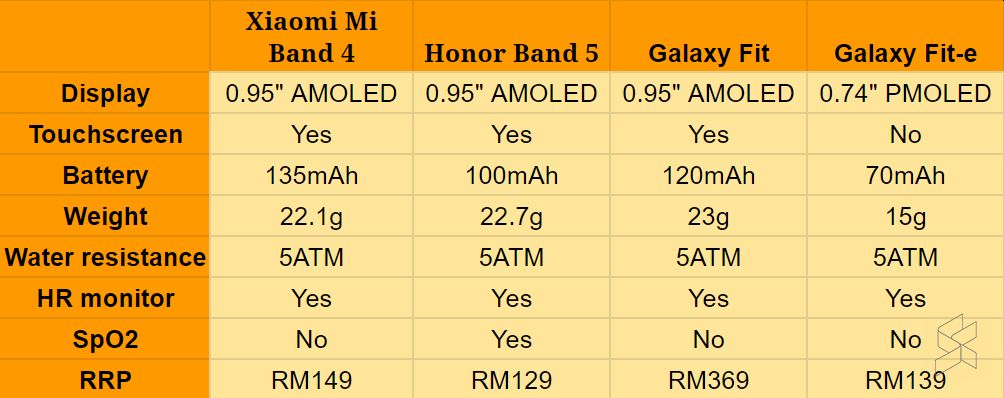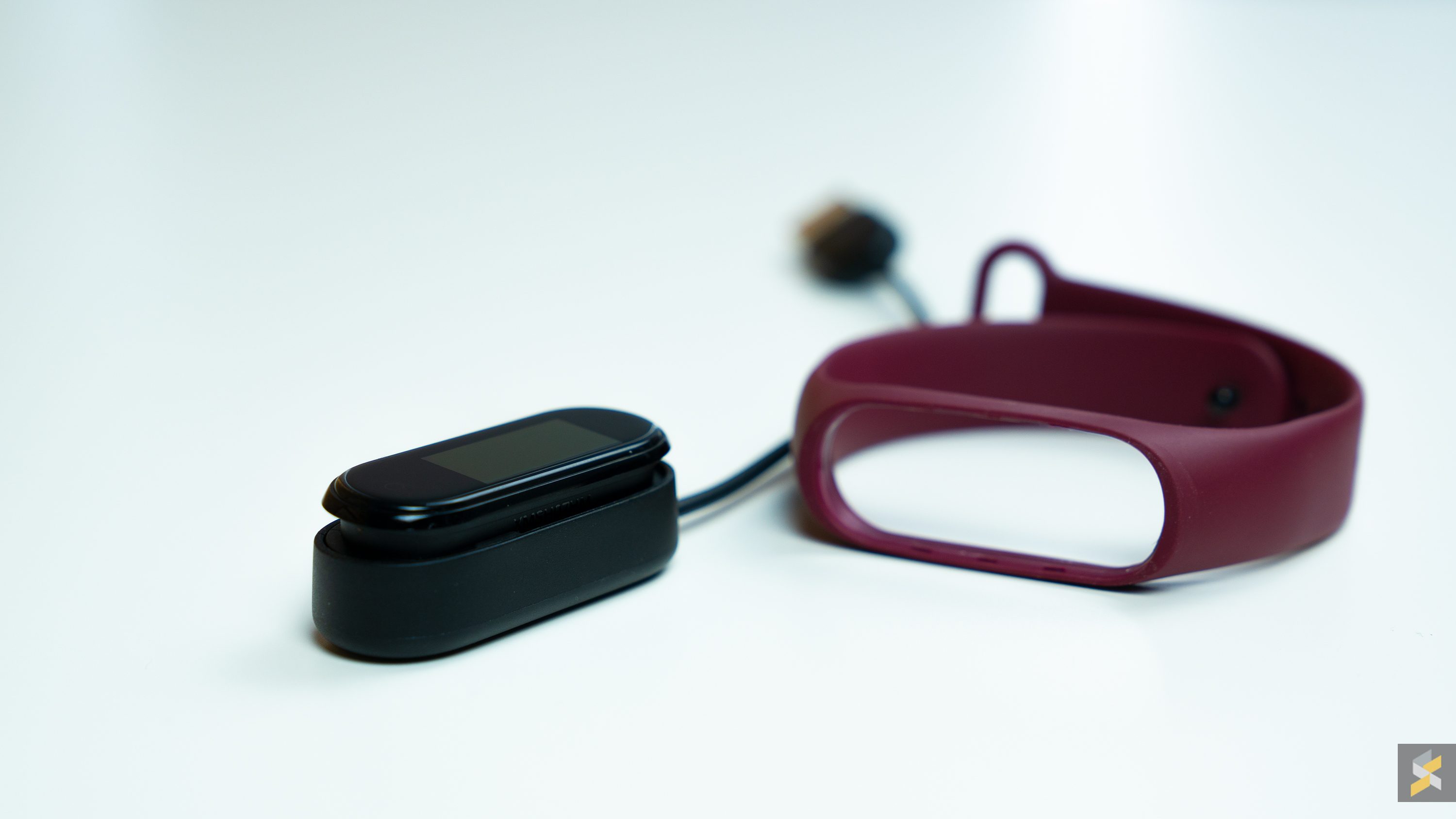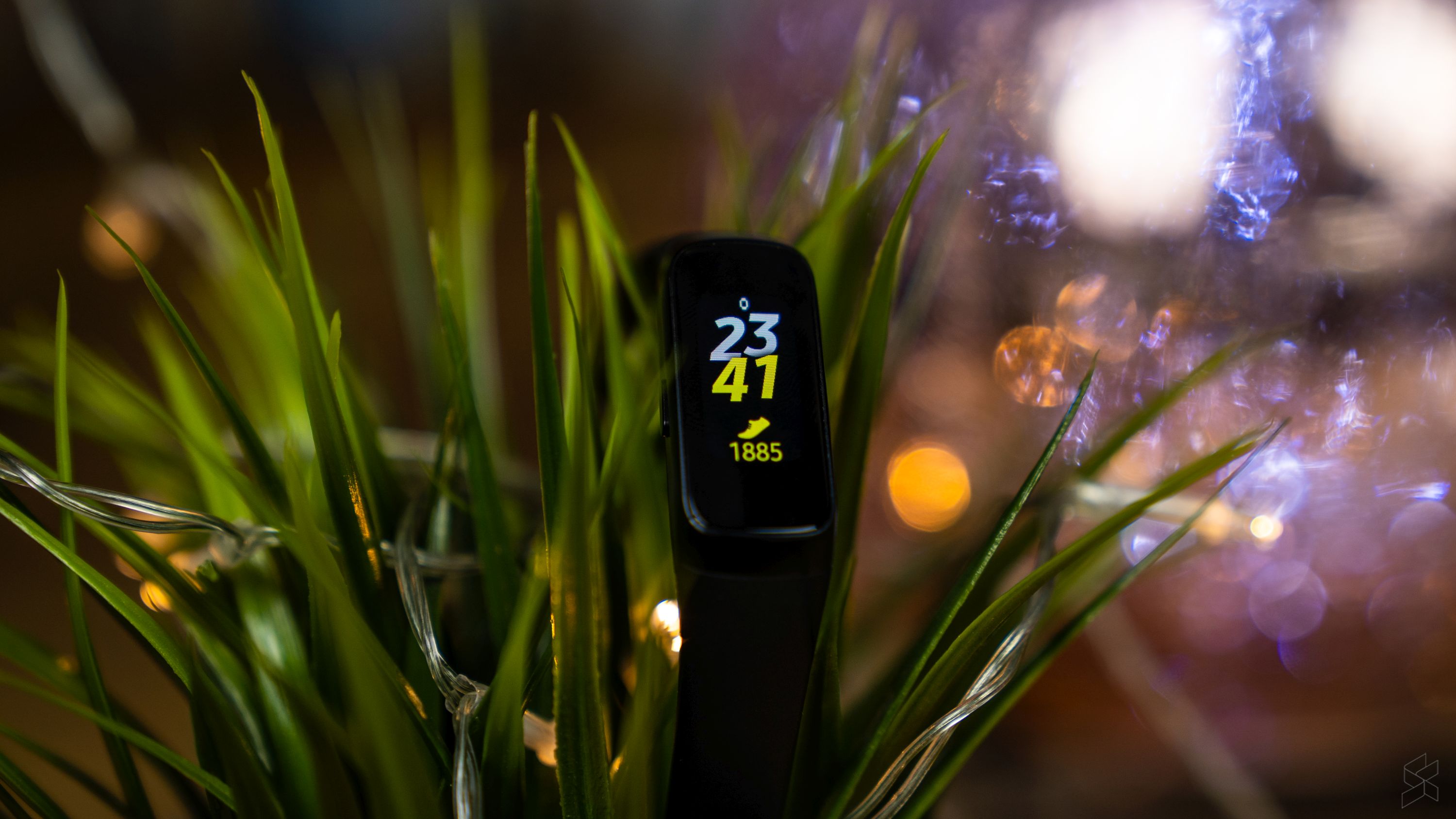There are so many fitness trackers in the market these days, and the problem with choosing one, is that they all seem so darn similar. That’s why many of you in the RKMD group have been asking for a comparison to help you choose between the near-identical options out there.
Today, I’ve got 4 wearables here: The Mi Band 4, Honor Band 5, Samsung Galaxy Fit, and the Galaxy Fit-e. They all look really similar, but in real-world use, they are, actually, quite different. With the exception of the Galaxy Fit, they’re all also priced in the same bracket—let’s take a look at a comparison of these four fitness trackers.
Build & design
Generally speaking, they’re all roughly the same price, with the exception of the pricier Galaxy Fit. Which shows, when you look at the finishing of the four wearables we have here.
The Fit has the nicest finish of the four, with a slightly more premium metallic feeling on the body itself. That’s not to say that the Mi Band 4 and Honor Band 5 don’t feel good, but they feel a little more… sporty, with a plasticky finish. The Galaxy Fit-e, on the other hand, does feel a little cheap in hand.
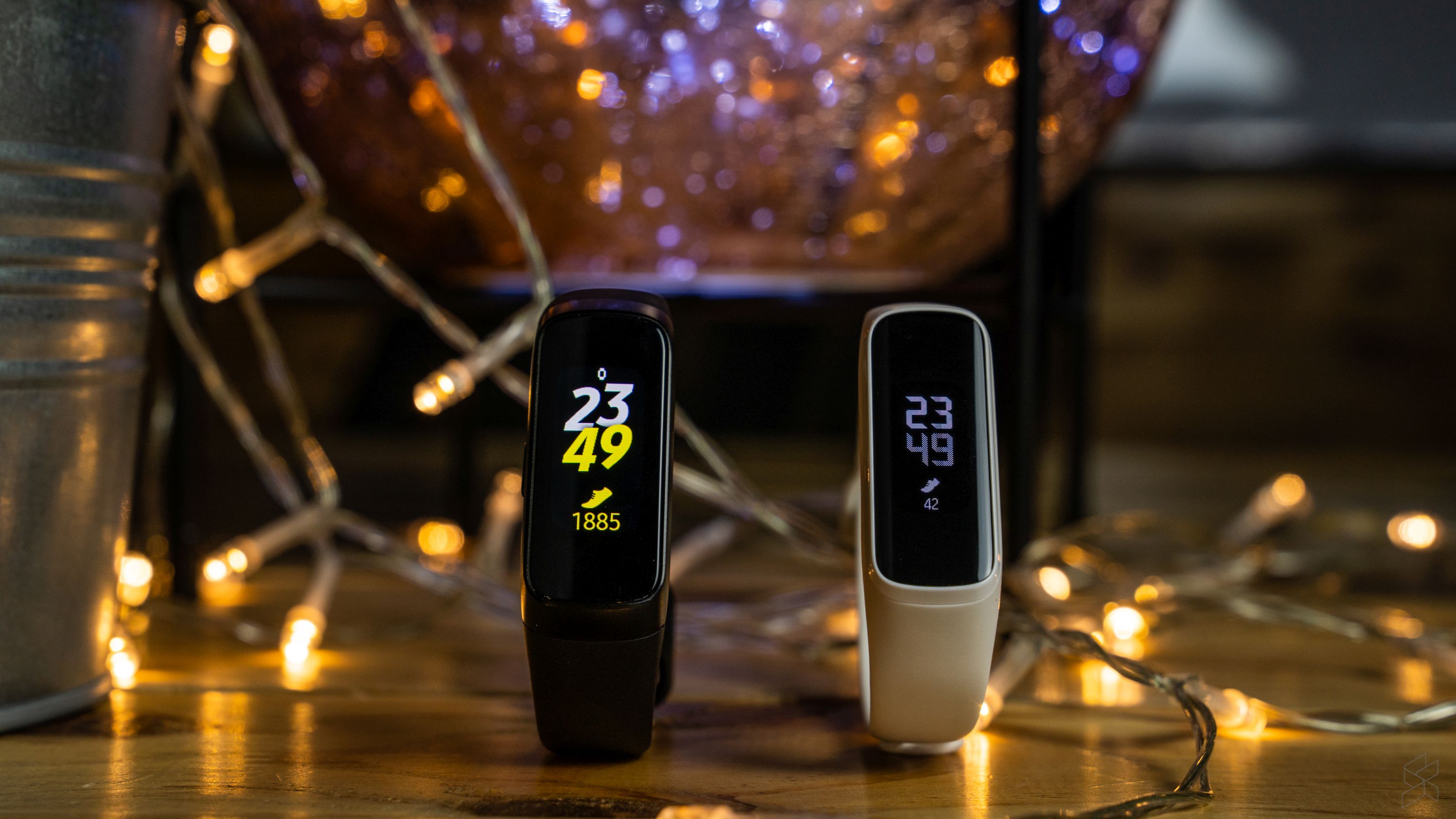
Display-wise, the Mi Band 4, Honor Band 5, and the Galaxy Fit have the exact same screen size, but the Fit-e has a smaller display, and footprint in general. A difference of 0.2” (compared to the Galaxy Fit) doesn’t sound like much, but to me, it’s pretty significant for such a small display.
But in use, the Galaxy Fit’s display is the clear winner here. It’s brighter, and the colours generally look a whole lot crisper than the others. Of course, the monochromatic display on the Fit-e is pretty weak (especially under sunlight), and when it comes to notifications, the smaller display doesn’t do a good job of displaying the previews.
Battery life: One clear winner
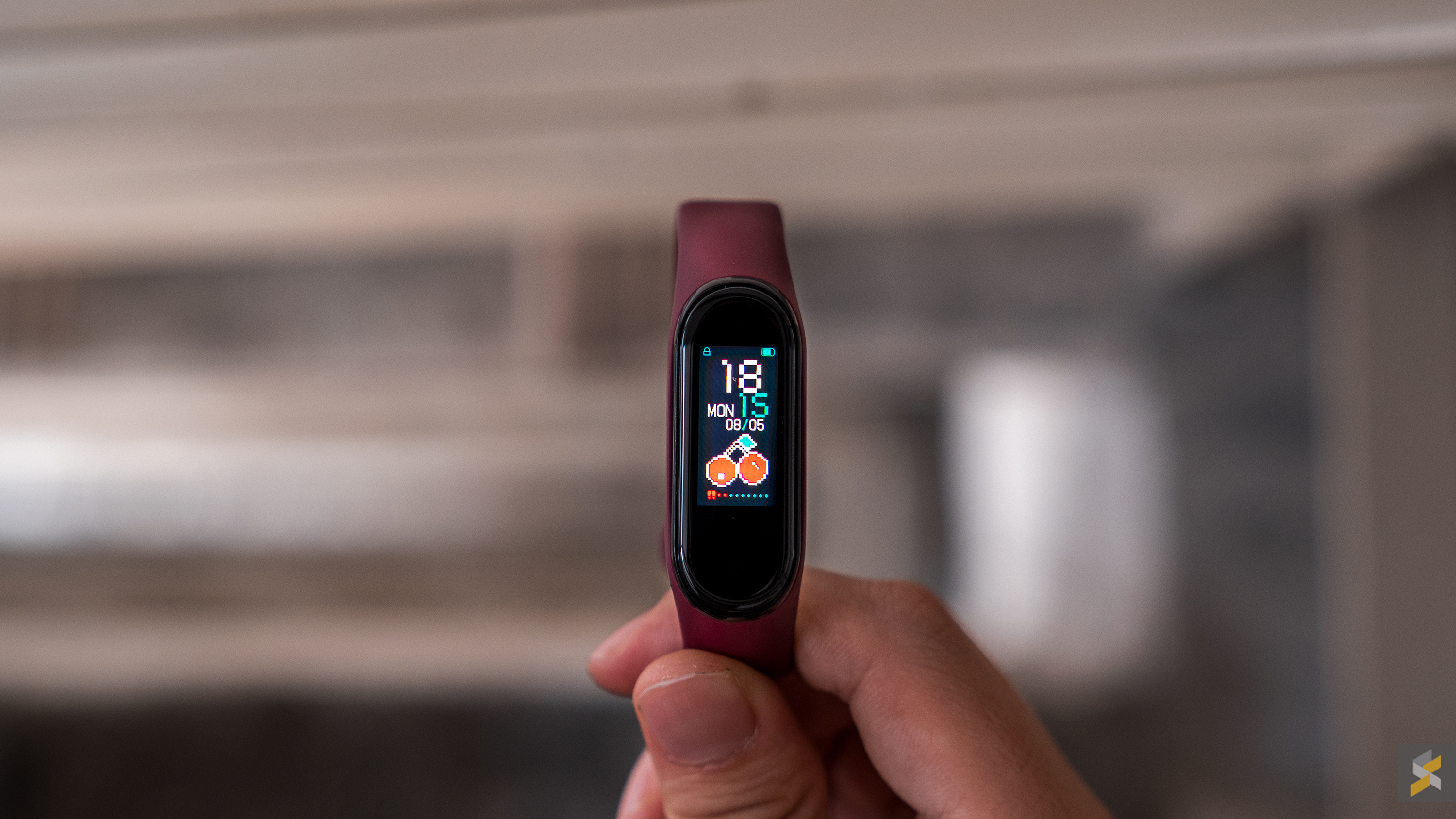
Battery life, in my opinion, can make or break a fitness tracker. Let’s run through the numbers:
Generally speaking, you can expect something like 4-5 days of battery life with the Galaxy Fit with average use. This is pretty much mirrored with the Galaxy Fit-e. Although it has a much smaller battery than the Galaxy Fit, the display is much less power-hungry, so you can expect around 4 days of average use. The Honor Band 5, which Honor says has a standby time of 14 days, also gives about 4-5 days of varied usage.
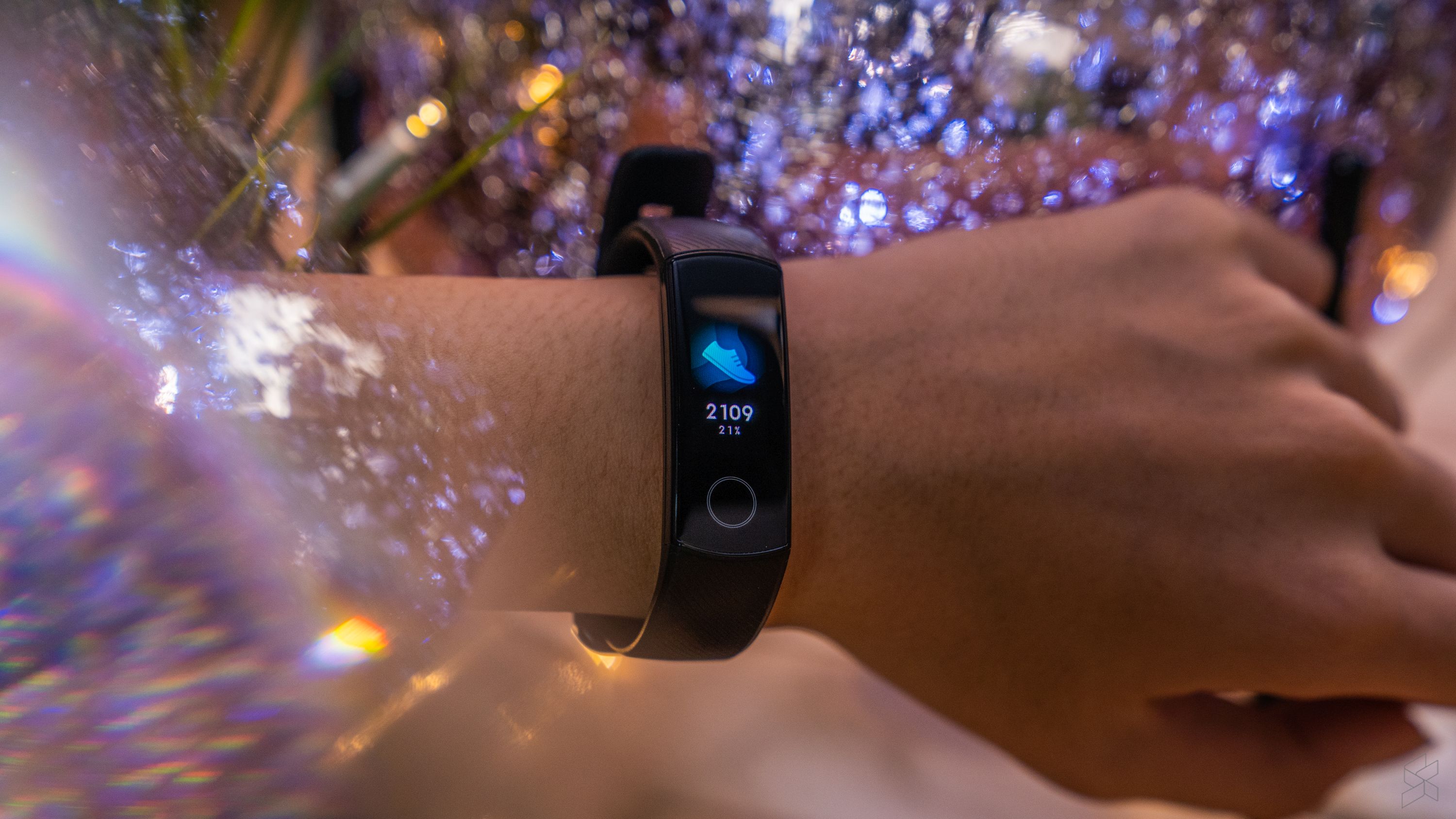
But when it comes to the Mi Band 4, I found during my earlier review that I got 14 days of usage out of the device. Which is frankly, pretty staggering. It’s a clear winner in this regard.
But of course, everything still needs to be charged. And again in that respect, the Galaxy Fit has the best charging mechanism of the 4.
It latches on magnetically, and you won’t really have to worry about it falling off even if you move it about. The Honor Band 5 and the Galaxy Fit-e, on the other hand, have a clip-on mechanism for their chargers, which is a little troublesome.
Here’s where the Mi Band 4 loses out, though. You have to take it out of the band, like this—then plug it into the charging dock. Maybe you won’t have to charge it as often, so it isn’t so much of an issue. Still, I’m not a fan.
Galaxy Wearable + Samsung Health vs Huawei Health vs Mi Fit
And of course, with the 4 different fitness trackers here, you’ve got 3 different accompanying apps. Samsung Wearable and Samsung Health for the Samsung trackers, Huawei Health for the Honor Band 5, and Mi Fit for the Mi Band 4. I won’t go into too much detail here, as everyone has their own tastes, but it really depends on each person’s liking—I like the Mi Fit app, although the Samsung Wearable app does pair with the Samsung Health app to form a pretty comprehensive setup.
Interface wise, the Galaxy Fit just feels a little slicker than the others, although the Mi Band 4 and Honor Band 5’s interfaces don’t fall far behind. The Galaxy Fit-e, well, is pretty basic. For example, it was really difficult to “start a workout” directly from the tracker, although you can still do so from Samsung Health on your phone. And because the Fit-e is the only fitness tracker here that doesn’t have a touchscreen, you’ll need to navigate menus using tap gestures—which aren’t very responsive.
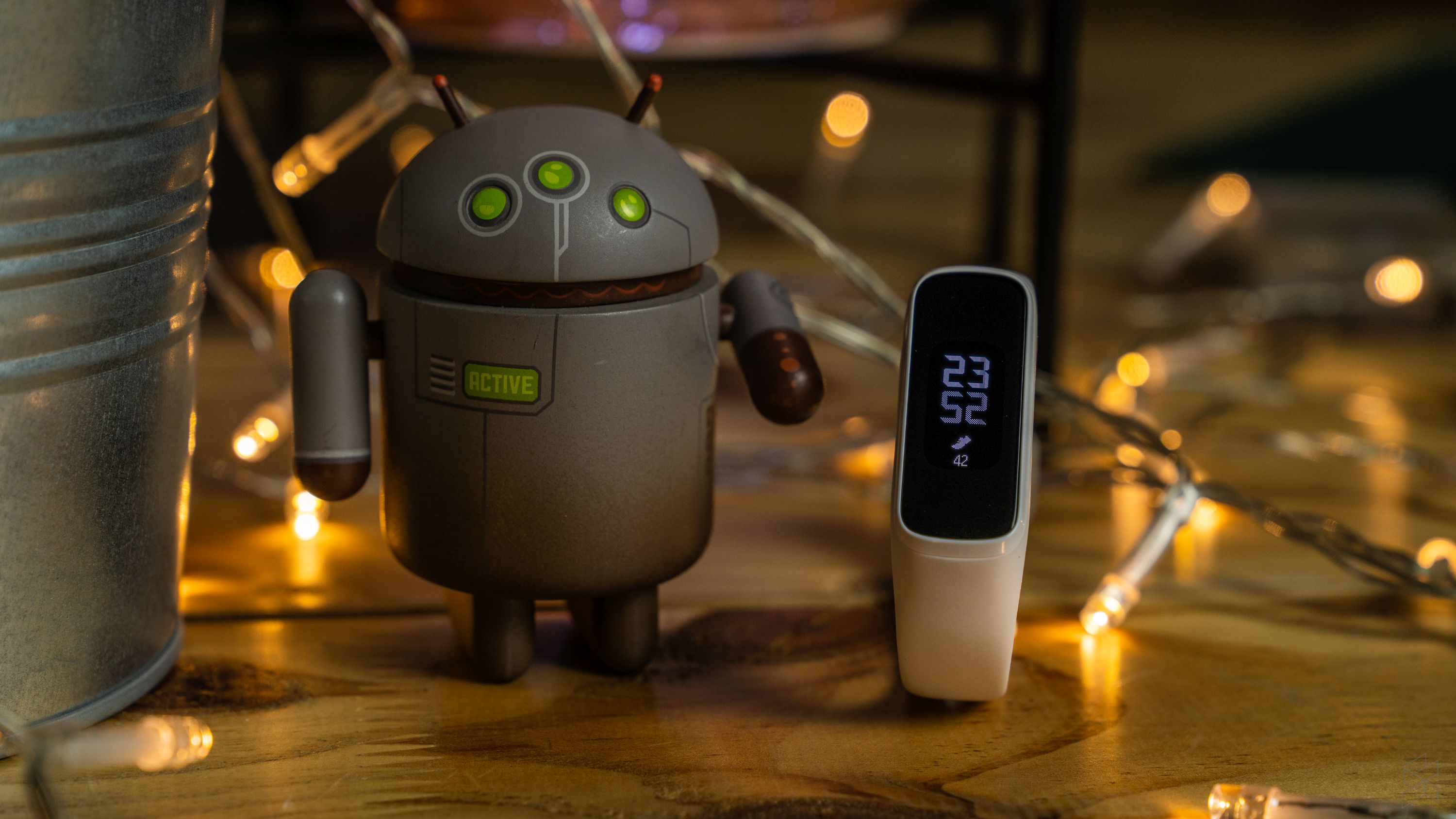
Verdict: And the winner goes to…
And there we have it. So yeah, they aren’t all that identical, are they? But Honor has rolled out an update for to the Honor Band 5, which will bring SPO2 functionality to the tracker—basically, the ability to see the oxygen concentration in your blood. That’s something that sets it apart from the others, but overall, they’re still pretty similar.
You have your standard heart rate sensors, notifications, and workout exercises. But really, when it comes to such similar devices, it’s all about the smoothness of your experience.
For me, while the Galaxy Fit is probably the best device here, bar the battery life, it’s still pretty pricey at RM369. And that lands me back at everyone’s favourite fitness tracker—the Mi Band 4. You can’t disregard the value of having 2 weeks of battery life, trust me. The one and only drawback, is the charging mechanism. But at RM149, it’s undeniably the best overall option.

